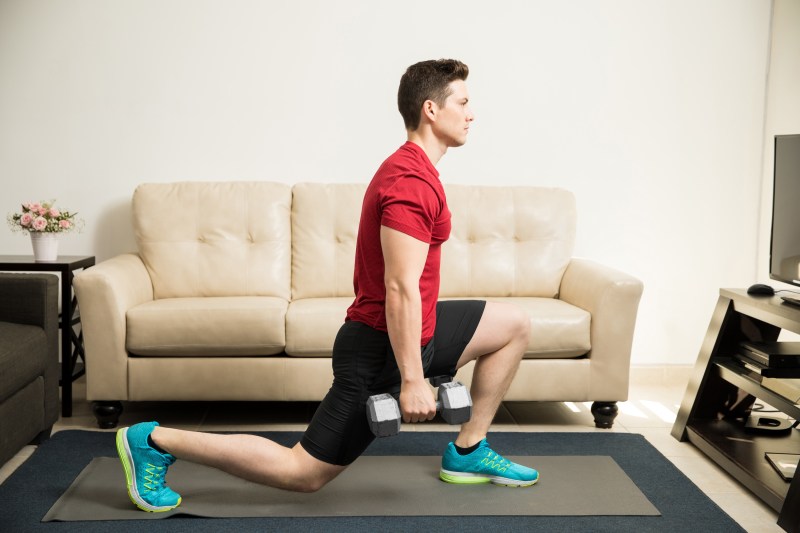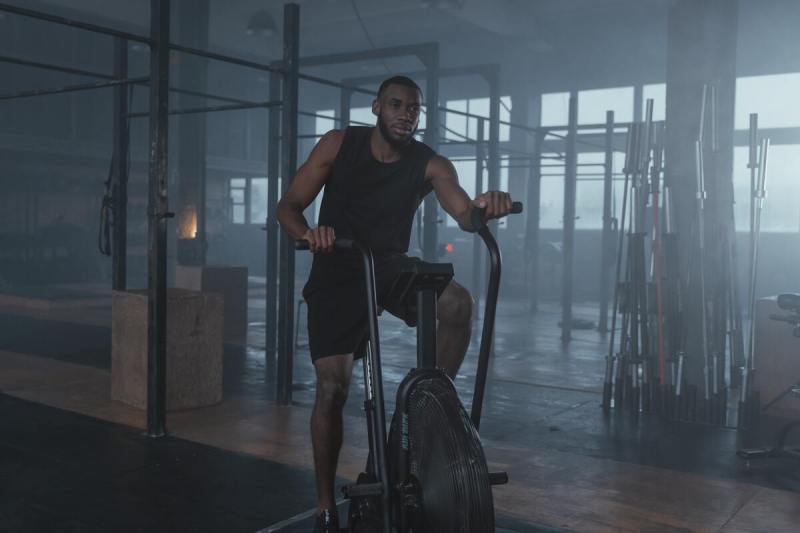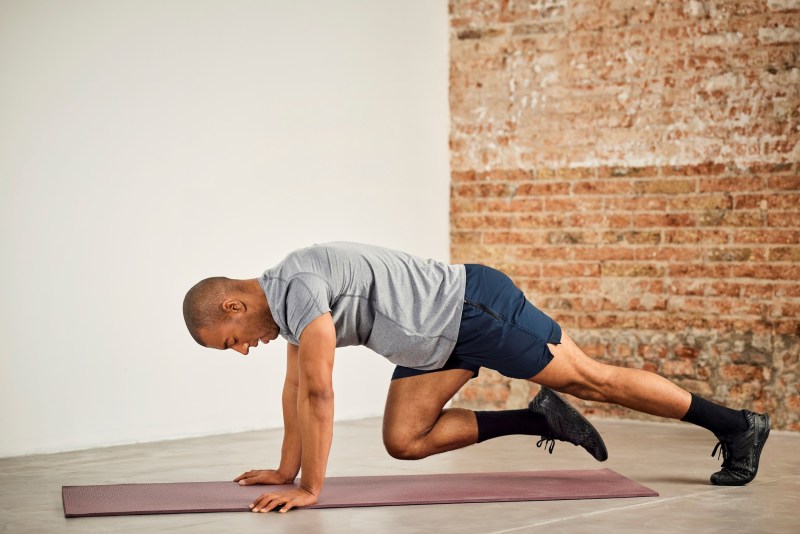Whether you’re a complete beginner or it’s been a few years, going to the gym can be intimidating and overwhelming. Plenty of well-designed beginner workouts safely introduce or reintroduce your body to exercise. The best workouts for beginners also help you learn the basic foundational movement patterns and exercises that you’ll eventually build on with more advanced progressions and modifications as you become fitter and stronger over time.
Even when you’re just starting out, your fitness routine must address one or more of the five major areas of health-related fitness: cardiovascular endurance, muscular strength, muscular endurance, flexibility, and body composition. To help ease your mind, we’ve compiled the best workout routines for beginners at home or in the gym, including exercises that are beneficial for aerobic endurance, losing fat, and building muscle.
Why it’s important to start slow when you’re a beginner

If it’s been a while, you’re starting a new exercise routine, or you’re brand new to exercise, here are the main reasons to start slow:
- To avoid injury – When you start exercising, your muscles, tendons, and ligaments are not used to the stress. You have a higher risk of injury if you push yourself too hard too soon.
- To prevent burnout – It’s easy to get excited about starting a new exercise routine, but it’s important to be realistic about your fitness goals. If you try to do too much too soon, you’re likely to get burned out and give up, quoting the old motto, “Exercise is hard.”
- To build a foundation for fitness – It takes time to build muscle and endurance. If you start out slowly and gradually increase the intensity and duration of your workouts, you’ll be more likely to stick with it and see results over the long term.
What are the benefits of a beginner workout plan?

Exercising and getting your body moving with your beginner workout plan is beneficial for several reasons, such as:
- Promoting weight loss and helping you achieve or maintain a healthy body weight.
- Helping you to build muscle mass, endurance, and definition.
- Reducing your risk of chronic disease.
- Lifting your mood, mental function, and energy levels.
- Stronger core muscles.
- Enhancing your flexibility and mobility.
- Improving your posture.
Do you need any equipment?

You don’t need equipment to get started because you can do bodyweight exercises and other movements like the plank, high knees, and jumping jacks to get your blood pumping. At some point, you might want to add a pair of dumbbells to work in a strength training regimen. Start with lighter to moderate weights that you feel comfortable with and can lift with good form. For example, grab two dumbbells that you can easily press overhead. Go for three sets of 10 to 15 repetitions and continue to perfect your form before advancing. Don’t forget to include 1 to 3 minutes of rest between sets.
What are the most common types of exercise?

What’s most important here is that you do what’s best for you and have fun knowing that you’re taking positive steps to improve your general health.
Here are the most common types of exercise:
- Strength training – Strength training is the term for exercises that boost your muscle power and strength. This includes any physical movement involving the use of your own body weight or equipment like dumbbells and resistance bands to strengthen your muscles. Examples include weightlifting and plyometrics.
- Aerobic – Aerobic exercise ramps up your heart rate and how much oxygen your body uses. You’ll work your large muscle groups with movements that are rhythmic and repetitive, such as cycling, swimming, walking, and dancing.
- High-intensity interval training (HIIT) – This form of exercise involves short bursts of high-intensity exercises followed by rest periods or low-intensity movements.
- Calisthenics – You could try calisthenics, which usually involves exercises performed at a medium aerobic pace without gym equipment. You’ll target your larger muscle groups with exercises like situps, pushups, and lunges.
- Flexibility and balance – These exercises improve body coordination, strengthen muscles, and promote muscle recovery. Examples include Pilates, yoga, stretching, tai chi, and core-strengthening movements.
- Boot camps – Exercise boot camps involve high-intensity circuits that are usually timed and combine resistance and aerobic exercises to optimize fitness potential.
What workout should I do on the first day?

If your muscles aren’t used to working out and it’s been a while, start slow with stretching and a 10-minute warmup. Start with cardio machines, walk or jog lightly on the treadmill, or try the exercise bike. If you feel like picking up a pair of dumbbells, make sure you’re choosing a lighter weight and practice perfecting your form first with exercises like a few dumbbell bicep curls and a chest fly. Go for a few simple bodyweight exercises like planks and get your heart pumping with faster-paced movements like jumping jacks.
How to create your workout plan

You know you want to get in shape, but you might be wondering how exactly to go about that and where you start. Once you figure out which workouts below will help you get closer to your goals, you need to figure out how many days per week you’ll be training. The key is to keep your workout routine realistic so you don’t get overwhelmed and end up quitting. Two workouts per week is a great place to start. Over time, you can add on additional workouts but only take on what you know you can sustain long-term.
You can also figure out what you want to do on your off days. There’s nothing wrong with taking a complete rest day, but consider active recovery days. These still involve movement but in a more relaxed way. Examples include yoga, walking your dog, hiking, and playing your favorite sport.
Best cardio workouts for beginners

Depending on your current level of fitness, a challenging cardio workout for a beginner might just be a brisk walk. Any form of cardio — whether running, cycling, rowing, swimming, or using an exercise machine like an elliptical — will elevate your heart rate and cause you to breathe harder in an effort to get more oxygen into your body and your working muscles. Cardio exercises improve your endurance and your body composition by burning calories and increasing your metabolic rate while simultaneously building muscle mass in the targeted muscles.
Sample cardio exercises for beginners

Here are the best sample cardio exercises for beginners:
- Walking
- Incline walking
- Hiking
- Stair climbing
- Elliptical trainers
- Cycling outside or on an exercise bike
- Spinning
- Jogging
- Rowing
- Swimming
- Water running
- Jumping rope
- Jumping jacks
- Cross-country skiing
- Mountain climbers
- Marching in place
Begin with a light to moderate intensity, around a five on an effort scale of one to ten, with ten being an all-out effort. If you’re choosing an exercise like jogging, it’s best to adopt the run/walk method. For example, walk for a few minutes and then try jogging for 30 to 60 seconds. Then, walk another one to two minutes before another 30 to 60-second jog. Aim for 10 to 20 minutes total, depending on your current fitness level.
Beginner cardio workouts should initially be capped at 20 minutes or so. You can gradually increase the duration of your workout as you get stronger and develop your endurance over time.
Best strengthening workouts for beginners

Even if you don’t have access to a gym or you simply prefer to work out at home or outside, there are plenty of excellent beginner strength training workouts you can do that will make you stronger, increase your muscle mass and definition, and reduce body fat. You can use kettlebells, resistance training machines, dumbbells, barbells, weight plates, resistance bands, medicine balls, sandbags, or even your own body weight.
Beginner strength training workouts that use lighter weights and a higher number of reps will increase your muscular endurance — the ability to persist during exercise without fatiguing. Workouts that use heavier weights and fewer reps increase the strength and size of your muscles.
Sample beginner total body strengthening workouts

For each exercise, choose a weight you can lift with proper form for the full range of motion for the number of reps given. The weight should feel challenging, especially for the last 4 to 5 reps of each set, but it shouldn’t compromise your form.
Try to complete two rounds of the following:
- 30 seconds of mountain climbers
- 12 squats with dumbbells at shoulder height
- 10 reps per side of step-ups with overhead press
- 12 reps of chest press with dumbbells
- 12 deadlifts with a barbell or dumbbells
- 20 stability ball crunches
- 12 reps of biceps curls
- 12 reps per side of bent-over single-arm rows
- 12 dumbbell tricep extensions per side
- 30-second planks
- 12 reps of bent-over reverse fly with dumbbells
Sample beginner total body bodyweight workouts

If you don’t have any equipment or you aren’t ready to grab those dumbbells or resistance bands, try to complete two rounds of the following bodyweight exercises:
- 25 jumping jacks
- 15 bodyweight squats
- 20-30 second plank
- Walking lunges – 10 per side
- 10 pushups (on knees if you need to)
- 30 seconds running in place with high knees
- 15 glute bridges
- 30 seconds Russian twist
- 10 lateral lunges per side
- 15 Superman back extensions
- 15 bent-knee tricep dips off the edge of a bench or chair
Sample beginner resistance machine workouts

It’s best to follow the instructions on each resistance machine in the circuit to adjust it according to your body size. Try to make sure the weight you choose still enables you to maintain proper form and a full range of motion for 10 to 12 reps. The weight should feel challenging toward the end of each set.
Try to complete two rounds of 10 to 12 reps of the following:
- Leg press machine
- Chest press
- Leg curls
- Lat pull-downs
- Assisted pull-ups
- Chest fly machine
- Shoulder press machine
- Cable machine triceps extensions
- Cable machine Pallof presses
- Resisted crunches
Top tips for beginning a workout plan

Here are some top tips for starting your fitness journey:
- Warm up before each workout with a few minutes of easy cardio, like jogging lightly on the treadmill or cycling on the stationary bike.
- Stretch before and after your workout to improve your flexibility and prevent soreness.
- Ease into things by starting out with alternating rest days and exercise days (two or three workouts per week). You can gradually progress to four to five workouts per week when you feel ready.
- Listen to your body, and stop immediately if you feel pain or excessive fatigue with any given exercise. Moreover, if you’re really sore after a workout, take an extra rest day, even if you planned to work out the following day.
- Vary the exercises you do to keep it interesting and make sure you’re hitting multiple muscle groups and getting the benefits of the different types of exercise.
- Drink plenty of water before, during, and after your workouts.
- Remember, proper form is paramount. Always err on the side of using lighter weights and doing fewer reps to ensure you’re able to execute the move correctly.
You can start working at your own pace in the comfort of your own home and using just your own body weight or just an exercise mat and a couple of light to moderate dumbbells. Most importantly, take a deep breath and remember that exercise is good for your body, so you’re already on the right track.




